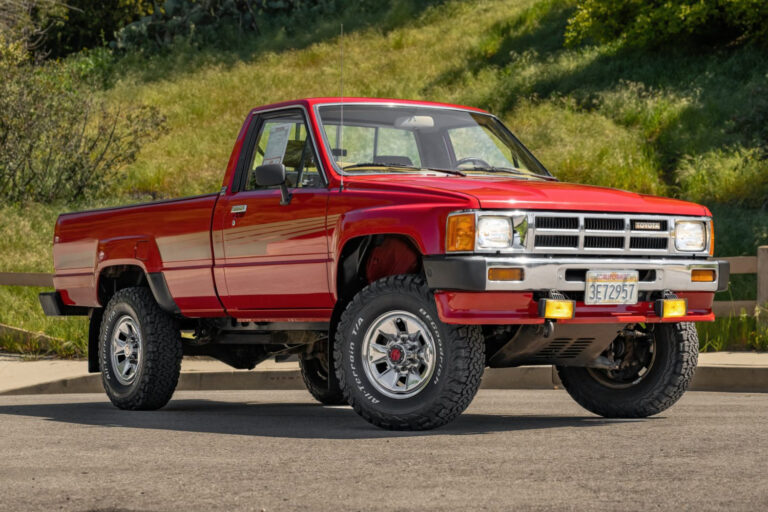English Sports Car Brands: A Legacy of Performance, Luxury, and Innovation
English Sports Car Brands: A Legacy of Performance, Luxury, and Innovation cars.truckstrend.com
The roar of an engine, the sleek lines cutting through the air, the unparalleled thrill of acceleration – these are the hallmarks of a sports car. And when it comes to the very essence of this automotive passion, English sports car brands stand in a league of their own. For centuries, British manufacturers have captivated enthusiasts worldwide with vehicles that blend engineering prowess, distinctive styling, and a driving experience that is as visceral as it is refined. From the handcrafted elegance of a Morgan to the blistering performance of a McLaren, English sports cars represent a rich tapestry of history, innovation, and an unwavering commitment to the art of driving.
This article delves into the captivating world of English sports car brands, exploring their illustrious past, their defining characteristics, and their enduring relevance in today’s global automotive landscape. Whether you’re a seasoned petrolhead or simply curious about these magnificent machines, prepare to embark on a journey through the heart of British automotive excellence.
English Sports Car Brands: A Legacy of Performance, Luxury, and Innovation
The Enduring Legacy: A Brief History and Philosophy
The story of English sports cars is deeply intertwined with the history of motorsport and a unique national character that values craftsmanship, individuality, and a certain understated panache. Unlike some of their continental counterparts, British sports cars often prioritized handling, agility, and driver engagement over sheer horsepower in their formative years. The post-war era saw a boom in small, affordable sports cars like the MG Midget and Triumph Spitfire, which brought open-top motoring to the masses.
However, the British sports car tradition also encompasses marques synonymous with high-performance and luxury. Companies like Aston Martin and Jaguar have long been purveyors of grand tourers and powerful coupes, blending sophistication with impressive speed. The underlying philosophy often revolved around the idea of a car being an extension of the driver, demanding skill and offering immense reward. This focus on driver involvement, often coupled with lightweight construction and balanced chassis, became a defining characteristic that persists to this day.
Pillars of British Automotive Excellence: Iconic English Sports Car Brands
The landscape of English sports car brands is diverse, ranging from venerable heritage marques to cutting-edge technological pioneers. Each brand brings its unique flavour to the table, contributing to the rich tapestry of British automotive history.
Aston Martin: The Epitome of Grand Touring Luxury
Synonymous with James Bond and a heritage stretching back over a century, Aston Martin embodies the fusion of power, elegance, and exclusivity. Founded in 1913, Aston Martin has consistently produced cars that are as beautiful to behold as they are exhilarating to drive. Their vehicles are renowned for their powerful V8 and V12 engines, handcrafted interiors, and a timeless design language that exudes sophistication.
- Key Characteristics: Hand-built luxury, powerful engines, distinctive grille, blend of performance and comfort, classic British charm.
- Iconic Models: DB5 (the quintessential Bond car), V8 Vantage, Vanquish, DBS Superleggera, DB11, and the cutting-edge Valkyrie hypercar.
- Current Focus: Expanding into SUVs (DBX) while maintaining their core sports car and grand tourer offerings, with increasing focus on electrification.

McLaren: Formula 1 Purity and Hypercar Prowess

A relative newcomer to road cars compared to Aston Martin, McLaren Automotive emerged from the legendary McLaren Racing Formula 1 team. Their vehicles are uncompromisingly focused on performance, employing advanced composite materials, aerodynamic mastery, and F1-derived technology to deliver unparalleled speed and handling. McLaren cars are engineering marvels, built for the track but thrilling on the road.
- Key Characteristics: Carbon fibre chassis, extreme aerodynamics, lightweight construction, brutal performance, direct F1 lineage, driver-centric cockpits.
- Iconic Models: F1 (a legendary hypercar), P1 (hybrid hypercar), 720S, Artura (hybrid supercar), Senna, Speedtail.
- Current Focus: Developing hybrid powertrains, pushing the boundaries of lightweight materials, and expanding their range of supercars and hypercars.
![]()
Lotus: The Art of Lightweight Performance
Colin Chapman, the visionary founder of Lotus, famously advocated for "simplify, then add lightness." This philosophy has been the bedrock of Lotus’s design and engineering since its inception in 1948. Lotus cars are celebrated for their exceptional handling, telepathic steering, and a pure, unadulterated driving experience, often achieved with less power than their rivals but superior agility.
- Key Characteristics: Lightweight construction, superb handling, minimalist interiors, driver engagement, iconic design.
- Iconic Models: Elite, Elan, Esprit, Elise, Exige, Evora.
- Current Focus: Transitioning to electric vehicles with the hypercar Evija and the SUV Eletre, while maintaining their performance heritage with new sports cars like the Emira.
Jaguar: Grace, Pace, and Space (with a Sporting Edge)
While Jaguar’s portfolio extends beyond pure sports cars to luxury saloons and SUVs, their contribution to the sports car world is undeniable. From the legendary E-Type to the modern F-Type, Jaguar has consistently produced cars that combine beautiful design, powerful engines, and a sophisticated driving experience. Their sports cars offer a unique blend of elegance and performance, making them appealing to those who appreciate both luxury and speed.
- Key Characteristics: Elegant styling, powerful engines, refined interiors, a balance of performance and luxury.
- Iconic Models: XK120, C-Type, D-Type, E-Type (often cited as one of the most beautiful cars ever made), F-Type.
- Current Focus: Moving towards an all-electric luxury brand, with future sports car plans likely integrating advanced electric powertrains.
Morgan: Handcrafted Tradition and Timeless Appeal
In an age of mass production, Morgan stands as a defiant anachronism, proudly building cars largely by hand with traditional materials like wood (ash frames) and aluminium. Founded in 1909, Morgan cars possess a unique, pre-war aesthetic that instantly sets them apart. They offer a raw, engaging, and deeply personal driving experience, appealing to those who value heritage, craftsmanship, and individuality above all else.
- Key Characteristics: Hand-built, traditional materials (ash frame), retro styling, open-top motoring, unique driving feel.
- Iconic Models: 4/4, Plus 8, Aero 8, 3-Wheeler, Plus Four, Plus Six.
- Current Focus: Evolving their platforms (e.g., CX-Generation aluminium chassis) while retaining their distinctive styling and handcrafted appeal.
Caterham: Pure Driving, Stripped Down
Caterham cars are the spiritual successors to the iconic Lotus Seven, a lightweight, minimalist sports car designed by Colin Chapman. Caterham acquired the rights to the Seven in 1973 and has since evolved the design, staying true to the original philosophy of providing a raw, unadulterated driving experience. These cars are often sold as kits for enthusiasts to build themselves, emphasizing driver involvement from start to finish.
- Key Characteristics: Extremely lightweight, open-wheel styling (on some models), bare-bones interior, focused purely on handling and acceleration, often kit-built.
- Iconic Models: Seven (various iterations like 170, 360, 620).
- Current Focus: Continuing to refine the Seven platform, exploring new engine options, and maintaining their niche as the ultimate track-day car.
TVR: Rebellious Power and Distinctive Design (Historical Note)
TVR holds a significant place in English sports car history, known for its powerful engines, unconventional designs, and often challenging driving dynamics. From the 1960s to the early 2000s, TVR produced raw, untamed beasts that prioritized performance and dramatic styling. While the company has faced various ownership changes and production halts, its legacy of powerful, distinctive British sports cars endures. A new Griffith model has been announced, though production remains sporadic.
- Key Characteristics: Muscular styling, powerful engines (often V8s), no electronic driver aids, unique design features.
- Iconic Models: Griffith, Chimaera, Cerbera, Sagaris.
Why Choose an English Sports Car? Benefits and Considerations
Choosing an English sports car is often more than just a practical decision; it’s an emotional one.
- Unparalleled Driving Experience: Many English sports cars prioritize driver engagement, offering exceptional steering feel, balanced chassis, and a direct connection to the road.
- Distinctive Style: From the timeless elegance of Aston Martin to the quirky charm of Morgan, English sports cars possess a unique aesthetic that stands out from the crowd.
- Rich Heritage and Exclusivity: Owning an English sports car means becoming part of a storied tradition. Many brands are low-volume manufacturers, adding to their exclusivity.
- Craftsmanship and Quality: Particularly with brands like Aston Martin and Morgan, there’s an emphasis on handcrafted elements and meticulous attention to detail.
- Investment Potential: Certain classic and rare models can appreciate in value, though this should not be the primary motivator for purchase.
Challenges and Solutions
While appealing, owning an English sports car can present certain challenges:
- Cost: New English sports cars, especially from premium brands, come with a significant price tag.
- Solution: Explore the used market, or consider entry-level models from brands like Caterham or older Lotus models.
- Maintenance and Parts: Specialized parts and skilled mechanics might be required, leading to higher maintenance costs.
- Solution: Research specialist garages, join owner clubs for advice, and factor maintenance into your budget.
- Reliability (Historical Perception): Older English cars sometimes had a reputation for unreliability. Modern cars are significantly better.
- Solution: Buy from reputable dealers, check service history, and consider extended warranties.
- Practicality: Most sports cars are two-seaters with limited luggage space.
- Solution: Accept it as a weekend toy or second car, or consider grand tourers (like some Aston Martins or Jaguars) that offer more comfort and space.
Practical Advice for Prospective Owners
If you’re considering purchasing an English sports car, here’s some actionable advice:
- Define Your Needs: Are you looking for a daily driver, a track weapon, a weekend cruiser, or a collector’s item? Your intended use will narrow down your options.
- Set a Realistic Budget: This includes not just the purchase price, but also insurance, maintenance, fuel, and potential modifications.
- Research Thoroughly: Understand the specific model’s quirks, common issues, and ownership costs. Read reviews, watch videos, and consult owner forums.
- Inspect Before You Buy: For used cars, a pre-purchase inspection by a specialist mechanic is crucial. Check for service history, accident damage, and wear and tear.
- Consider Test Drives: Drive as many different models as possible to find what truly resonates with your driving style and preferences.
- Factor in Aftermarket Support: Are parts readily available? Are there specialist mechanics in your area?
- Join Owner Communities: These communities are invaluable sources of information, advice, and camaraderie.
English Sports Car Brands: Representative Price Guide (New Models)
Please note that these prices are approximate and subject to change based on model year, trim level, optional extras, market conditions, and regional taxes. They represent new car prices for current models.
| Brand | Model (Representative) | Typical Price Range (New, USD) | Defining Characteristics |
|---|---|---|---|
| Aston Martin | DB12, Vantage | $200,000 – $350,000+ | Luxury grand tourer, powerful V8/V12, exquisite craftsmanship, elegant design. |
| McLaren | Artura, 750S | $240,000 – $380,000+ | Pure performance, carbon fibre chassis, F1 technology, track-focused, cutting-edge. |
| Lotus | Emira | $90,000 – $110,000 | Lightweight, exceptional handling, driver-focused, purist appeal. |
| Jaguar | F-Type (P450/R75) | $78,000 – $115,000+ | Elegant styling, powerful engines (V6/V8), comfortable, balanced performance and luxury. |
| Morgan | Plus Four, Plus Six | $90,000 – $130,000+ | Handcrafted, traditional materials, retro aesthetic, unique driving experience, bespoke. |
| Caterham | Seven 360, Seven 485 | $45,000 – $75,000+ | Raw, minimalist, extremely lightweight, superb handling, often kit-built, track-day focused. |
Note: Hypercars and limited-edition models (e.g., McLaren P1, Aston Martin Valkyrie, Lotus Evija) can command prices well into the millions.
Frequently Asked Questions (FAQ)
Q1: Are English sports cars reliable?
A1: Modern English sports cars from established brands like Aston Martin, McLaren, and Jaguar are generally reliable, on par with other high-performance vehicles. Older or niche models, particularly from the 70s-90s, might require more dedicated maintenance. Regular servicing by specialists is key to reliability.
Q2: What’s the difference between a sports car and a grand tourer (GT)?
A2: A sports car is typically a two-seater designed for maximum performance, agility, and driver engagement. A grand tourer (GT) is also high-performance but emphasizes comfort, luxury, and the ability to cover long distances quickly and comfortably. Aston Martin excels at GTs, while McLaren focuses more on pure sports/supercars.
Q3: Can I use an English sports car as a daily driver?
A3: It depends on the model. A Jaguar F-Type or an Aston Martin DB12 could be daily driven, though practicality like fuel economy, luggage space, and parking might be considerations. A Lotus Elise or a Caterham Seven, however, would be very challenging and uncomfortable for daily commuting.
Q4: Are English sports cars expensive to insure?
A4: Yes, due to their high value, performance capabilities, and often higher repair costs, insurance premiums for English sports cars can be significantly higher than for regular vehicles.
Q5: What’s the best English sports car for a first-time owner?
A5: For a blend of performance, relative practicality, and brand recognition, a used Jaguar F-Type or an older Lotus Evora could be good starting points. If you prioritize raw driving and budget is a major concern, a Caterham Seven (perhaps a pre-owned one) offers incredible value per smile.
Q6: Do English sports cars hold their value?
A6: Like all cars, depreciation varies. High-demand, limited-production models, or very desirable classics (e.g., certain E-Types, DB5s, or McLaren F1s) can appreciate significantly. More common models will generally depreciate, but well-maintained examples of popular models tend to hold value better than mass-market cars.
Conclusion
The world of English sports car brands is a testament to a nation’s enduring passion for automotive excellence. From the stately luxury of Aston Martin to the pure, unadulterated performance of McLaren, and the handcrafted charm of Morgan, these brands offer a diverse spectrum of driving experiences, each imbued with a unique British character. They are more than just vehicles; they are expressions of artistry, engineering prowess, and a deep-seated love for the open road.
Whether you aspire to own one, admire them from afar, or simply appreciate their historical significance, English sports cars continue to define segments of the automotive world, pushing boundaries and captivating hearts. They represent a legacy of innovation, a commitment to the driver, and a timeless appeal that ensures their place in the pantheon of automotive legends for generations to come.




